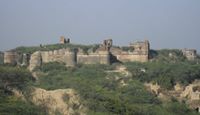Where does a camel store large supplies of water?
Camels do not store water in their humps as was once commonly believed. The humps are actually reservoirs of fatty tissue. Concentrating body fat in their humps minimizes the insulating effect fat would have if distributed over the rest of their bodies, helping camels survive in hot climates.
Camels have a series of physiological adaptations that allow them to withstand long periods of time without any external source of water. Unlike other mammals, their red blood cells are oval rather than circular in shape. This variation allows them to swell up to three times their original shape. This facilitates the flow of red blood cells during dehydration and makes them better at withstanding high osmotic variation without rupturing when drinking large amounts of water. A 600 kg (1,300 lb) camel can drink 200 L (53 US gal) of water in three minutes. If a human did this, our red blood cells would burst.
Camels are able to withstand changes in body temperature and water consumption that would kill most other animals. Their temperature ranges from 34 °C (93 °F) at dawn and steadily increases to 40 °C (104 °F) by sunset, before they cool off at night again. In general, to compare between camels and the other livestock, camels lose only 1.3 liters of fluid intake every day while the other livestock lose 20 to 40 liters per day.
More Info:
www.google.com












